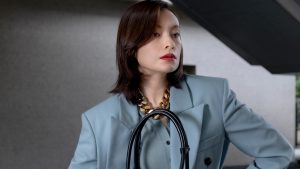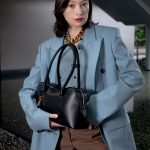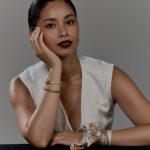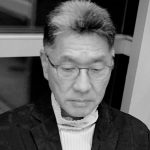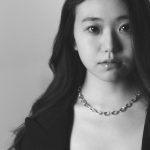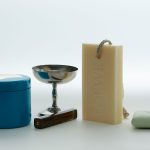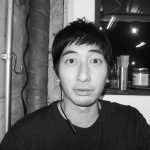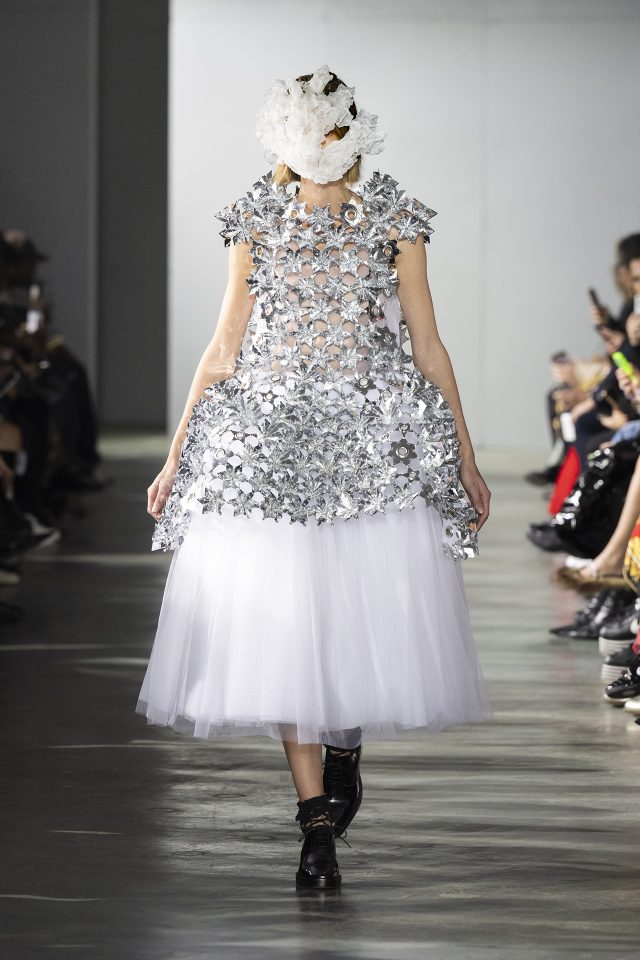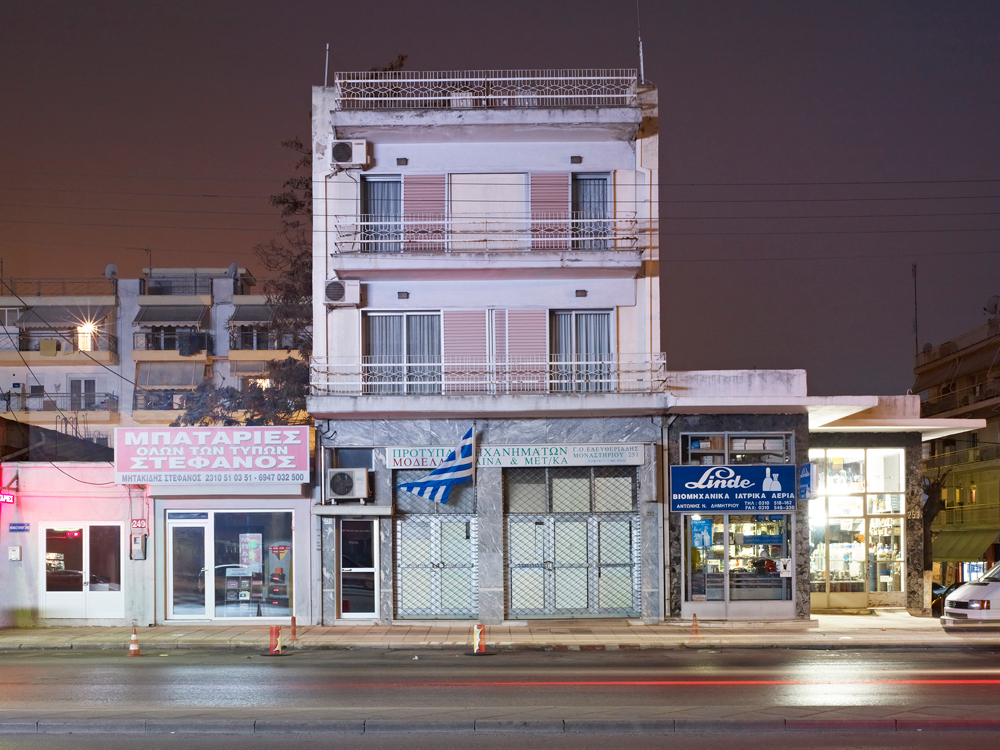写真家・Polly Tootal (ポリー・トゥータル) インタビュー
Polly Tootal
イギリス各地を旅しながら、その風景を撮りためてきたシリーズ作品「Somewhere in England」が話題となり、今注目を集める写真家 Polly Tootal (ポリー・トゥータル)。彼女が撮影するのは誰もが知る観光地ではなく、特定されない無名の場所だ。人々がいなくなった後の、静寂に包まれた風景を写し出したその作品群を見ると、行き交っていた人々やその土地に脈々と受け継がれている歴史にまで思いを巡らせてしまう。鑑賞者の想像力を掻立てるこうした写真表現はいかにして生み出されるのだろうか。現在のスタイルを確立した経緯や、作品のカギを握る場所の選定、制作のプロセスなど、その具体的な創作背景に迫った。
写真家・Polly Tootal (ポリー・トゥータル) インタビュー
Portraits
(The original text in English follows afterwards)
イギリス各地を旅しながら、その風景を撮りためてきたシリーズ作品「Somewhere in England」が話題となり、今注目を集める写真家 Polly Tootal (ポリー・トゥータル)。彼女が撮影するのは誰もが知る観光地ではなく、特定されない無名の場所だ。人々がいなくなった後の、静寂に包まれた風景を写し出したその作品群を見ると、行き交っていた人々やその土地に脈々と受け継がれている歴史にまで思いを巡らせてしまう。鑑賞者の想像力を掻立てるこうした写真表現はいかにして生み出されるのだろうか。現在のスタイルを確立した経緯や、作品のカギを握る場所の選定、制作のプロセスなど、その具体的な創作背景に迫った。

『#43389』 2014 45×60 inches | © Polly Tootal
—幼少期の思い出について教えてください。
父にカメラの使い方を教わって、彼が使っていた Olympus OM1 をお下がりでもらったの。それと、祖父母がクリスマスにポラロイドカメラを贈ってくれたことがあって。当時の私が見た中で最も素晴らしい物だったし、今でも使い続けているわ。

『#30104』 2010 33×45 inches | © Polly Tootal
—数ある芸術表現の中で、写真を選んだ理由は何ですか?
私はペインティングやドローイング、グラフィック・デザインも得意だったけれど、中でも写真は特別な存在だった。現実のものを撮影して加工もしくは破壊をすることで、元のイメージを超越した作品を生み出すのが好きだったの。16歳の時に家族のヌード写真を撮影してそれを再構築し、実物大の裸の人物像を作ったんだけど、その作品はとても上手くできた。そして、この作品のお陰でブライトン大学に合格し、エディトリアル・フォトグラフィーを学ぶことができたの。
—人気のなく、名も知れない場所を建築物とともに撮影するというスタイルは、どのようにして確立したのでしょうか?
私は、Bernd and Hilla Becher (ベルント&ヒラ・ベッヒャー) や Lewis Baltz (ルイス・ベルツ) といったドイツやアメリカのニュー・トポグラフィックス・フォトグラファーたちに多大な影響を受けてきたわ。でも、単に地形的な風景を記録したいとは思わなかった。大学時代は、マグナム・フォトグラファーである Mark Power (マーク・パワー) のもとで学んでいて、その頃から風景に目を向けるようになったの。はじめは35mmのカメラとカラーのフィルムで撮影していたのだけど、すぐに、より大きなフォーマットの方が自分のテーマに適していると気づいた。それで、カメラを Mamiya 7II にアップグレードしてテムズ川のシリーズ作品を作ったんだけど、川を写真に写し込む代わりに、全てが川から目を逸らしたイメージになっているの。今思うとこのシリーズが私のスタイルを決定づけたのだと思う。当時は手作業で現像をしていて、落ち着いた色調を好んで使っていた。卒業後も継続してイギリスの風景をテーマとした多くの作品を制作してきたんだけど、「Somewhere In England」の大部分は過去3年間で撮影したものね。

『#49653』 2014 33×45 inches | © Polly Tootal
—では、イギリス各地を撮り収めるプロジェクト「Somewhere in England」のコンセプトを教えてください。
このプロジェクトは明確なコンセプトからスタートしたのではなくて、自分の故郷であるイギリスを記録したいという想いから始めたの。最初に最も重視していたのは、テーマに制限を設けないということ。そして、平凡な中にある繊細さに目を向けて、自分自身を駆り立てるような親しみのある風景にこだわってきた。住んだり、働いたり、移動する中で、人々に使われている場所はどこにでもあるし、それが自然と私の目を引いて魅了する場所だった。自分が反応し、感動するものは全て写真に収めているのだけど、そういった場所には魅惑的で詩的なものを感じるわ。

『#43839』 2014 33×45 inches | © Polly Tootal
—人物を極力登場させない作風には、どのような意図が隠されていますか?
よく見ると、ほんの一部の作品には遠方に小さな人影があるのがわかると思うわ。でも確かに、大部分のイメージには人が写っていなくて、その場所にあった活気を取り去ろうと人々がいなくなるのを待っている。そして、鑑賞者がしっかりとその景色を見ることができるように、あえて静寂や沈黙を生み出しているの。私の写真は全てが人々に関するものだけど、必ずしも人々が物理的に写り込んでいる必要はないと思っているわ。
—基本的な制作過程について教えてください。
最近はアルカスイスのテクニカルカメラと、フェーズワンのデジタルバック、ホースマンの5×4フィルムカメラを使っていて、どれも重くて三脚を使っているから、まず設置するのに時間がかかるわ。時々1つの撮影対象に対して1つか2つの露光で撮影することもあるぐらい、じっくりと考えながら撮影している。Photoshop で加工することはほとんどなくて、通常は色味を修正して露出のバランスをとるぐらい。メインとなる作業は撮影場所を見つけることで、それには数週間を費やすこともあるの。
—ロケーションを探す際には車を使って旅をしているそうですが、場所の選定で最も重視しているポイントを教えてください。
行ってみたいと思う場所へはどこにでもランダムに旅行している。興味のある町や都市を見てみたりね。地図も大好きだから、よく地図を調べて地形を見ているわ。例えば、ミルトン・キーンズの(約1km間隔で幹線道路が整備されている)グリッド・システムや、エセックスの海岸にある湿地の干潟、シェフィールドのように、丘陵の多い北部の都市などにはとても興味をそそられる。1日だけの時もあれば、数日間を要する場合もあるけれど、撮影できそうな場所を探すために、一人で車を運転して旅に出るの。撮影場所は被写体や構図、形状、光、雰囲気、そして色調の全てが突然、魔法のほうにしっくりくる時があるから、その時の直感で選んでいるわ。

『#43406』 2014 33×45 inches | © Polly Tootal
—あなたの作品は写真でありながら、とてもグラフィカルで絵画的な印象も受けます。その理由や意図があれば教えてください。
写真を見る人が立ち止まって、じっと眺めてくれるような作品にしたいと思っているわ。絵のような雰囲気で引き込んで、イメージに何が表現されているのかをじっくりと観察してもらえるような写真を目指しているの。
—写真から伝わってくる静寂な空気感は、どのようにして表現されているのでしょうか?
建物を照らす人工的な光や朝4時の月夜の静けさ、霧のかかった日の朝日、神がかっているほど不思議に染められたドラマティックな空など、風景の中に存在する要素を頼りに緊張感や静寂さを生み出しているわ。

『#12701』 2008 33×45 inches | © Polly Tootal

『#52052』 2015 45×60 inches | © Polly Tootal
—写真制作を通して最も大切にしている精神があれば教えてください。
決して「真実」ではないのだけど、作者にとっての真実であること。
—これまでで最も気に入っている作品を、理由と共に教えてください。
最も気に入っているのは次の2つ。
まずひとつ目は、イギリスで世界一多く設置されている CCTV カメラを撮った『#43534』。ネガティヴで不安な存在である防犯カメラを、美しく表現することに興味があって。この写真は朝6時に撮影したもので、その時は霧がかっていた。この光景を、朝日が照らしてくれた瞬間を捕えたの。

『#43534』 2014 45×60 inches | © Polly Tootal
もうひとつは『#49714』。リヴァプールで最後に残された工業用の倉庫を撮影したものだけど、この建物はすぐにラグジュアリーなホテルに変わってしまった。私は工業化と、もう使われなくなってしまった工業化後の風景を、機能的な建物や開発、完成待ちのスペース、もしくはリニューアルされたばかりのエリアなどをミックスして撮影するのが好き。この場所も、撮影が終わってすぐに姿を変えてしまったわ。

『#49714』 2014 33×45 inches | © Polly Tootal
—現在進行中のプロジェクトや、次に撮影したい場所などがあれば教えてください。
今はギリシャのアテネで撮影を始めたところ。LAやパキスタンのラホールも、いつか撮影してみたいわ。
<プロフィール>
1978年、イギリス・ハートフォードシャー生まれ。ブライトン大学を2001年に卒業後、ロンドンをベースに活動するフォトグラファー。これまでにPrix Du Public Ville D’Hyeres Photographie 2015、The Association of Photographers Award(Landscape Series 2010)ほか、数多くの賞を獲得。また、ロンドンやサンディエゴのギャラリーや文化機関、Venice Architectural Biennale 2014のPalazzo Rialtoといった場所で、個展やグループ展を開催している。アメリカ、ヨーロッパ各国、イギリスのプライベート・コレクションにも加えられている。
HP: pollytootal.com
Instagram: @pollytootal
—Tell us a little bit about memories of your childhood.
My father taught me to use a camera, he used an Olympus OM1 and handed it down to me. Also my Grandparents gave me a polaroid camera one Christmas and I thought this was the best thing I had ever seen. I never stopped using it.
—Among all the methods of artistic expression, why did you choose photography?
I was pretty good at painting, drawing, and graphic design but I felt photography was special, I loved taking an image from reality and manipulating or subverting it into something beyond that. When I was 16 I made a life size reconstruction of a naked person made up from photographs of my family in the nude, it was pretty successful project. With this and other work I got a place at Brighton University to study Editorial Photography.
—Your shooting focuses on anonymous places with buildings and empty street. How did you develop the style?
I have always been massively influenced by the new topographic photographers of America and Germany, people like the Bechers and Lewis Baltz but I knew I didn’t want to document landscape solely topographically. I started looking at the landscape during my photography degree under Magnum photographer Mark Power. I was shooting on a 35mm camera with colour film but I soon realised a larger format would suit my subject matter more. I upgraded to a Mamiya 7ii and made a series on the river Thames, all the images looked away from the river instead of including it in the images. I think it was at this point I was defining my style. I was hand printing my work and using cool tones as the asthetic. After I graduated I continued photographing building up a large body of work around the theme the British Landscape. In the past 3 years I have shot the majority of Somewhere In England.
—Tell us a bit about the concept of your series Somewhere in England which has captured landscapes found across England.
I didn’t start off with a specific concept, I wanted to document my home, England. The most important thing for me at the beginning was that the subject matter should open ended and that I stick to landscape that was familiar in order to push myself into really looking at the subtleties of the ordinary. The everyday places we live in, work in, travel through, the landscape man uses is everywhere. It was a natural place to start looking and it captivated me. I photograph anything I have a reaction to, anything that moves me, I find these places exotic and poetic.
—Most of your images composed without any people. What sort of intention is hidden?
In a few of my photographs you will notice tiny figures in the distance, but it’s true mostly my images are devoid of people, I wait for them to disappear in an attempt to strip the scene of that energy. To create a stillness and a silence to encourage the viewer to really look at the landscape in front of them, my photographs are all about people but it’s not necessary to physically include them.
—Tell us about your basic creative process when creating photographs?
Currently I shoot on an Arca Swiss technical camera with a Phase One digital back and a horseman 5×4 film camera, with both cameras I have to use a tripod as they are very heavy and slow to set up. I photograph in a very considered way, sometimes only making one or two exposures of one thing. I don’t do much manipulation in Photoshop, usually only correcting colour and balancing the exposure. The main work is in finding the places to photograph in the first place, this can take weeks.
—I have heard that you traveled by car when shooting. What are you most mindful of selecting location?
I travel on random journeys to anywhere I feel like. Through towns and cities I want to see. I love maps so I will study a map and look at the terrain, it could be the grid system of Milton Keynes, the marshy flats of the Essex coast or a northern hilly city like Sheffield that captures my intrigue. I then go on long dedicated journeys in my car, alone, to search for potential photographs, sometimes for a day, sometimes for several days. The particular scenes I photograph are chosen instinctively, the subject matter, composition, geometry, the light, atmosphere and colour will all suddenly come together and make sense, this is magic to me.
—Your photography feels graphical and picturesque. What is your intention behind this?
My Intention is to encourage the viewer to stop and contemplate the photograph I present. To be seduced by the picturesque but to then take longer to study what is in the image.
—How do you express tranquil silence through your photography?
I rely on elements that exist in the landscape when I’m photographing, artificial light painting a building, the stillness of a 4am moonlit night, the first sunlight on a misty morning or a dramatic sky can embue a strange supernatural quailty which can highen the tension or stillness in an image.
—As a photographer, what is the philosophy that you hold most important?
It is never the ‘truth’ but it is the authors truth
—What is your favorite of your own works and why?
These images are probably two of my favourites.
The first, #43534 cctv cameras (the Uk has more than anywhere else in the world) I’m interested in presenting this negative, unsettling view in a beautiful way. The photograph was taken at 6am, it was a misty morning, I caught the first sunlight which illuminated the scene.
The second image #49714 is of one of the last industrial warehouses in Liverpool UK, soon to be turned into a luxury hotel. I am interested in photographing industrial and post industrial landscapes where abandoned industry mixes with functioning architecture and development, spaces left awaiting completion or areas of recent renewal. This place will soon no longer exist as it is.
—Tell us about any projects you have lined up for the future. Are there any specific places (or countries) where you would like to shoot next?
I have started shooting in Athens, Greece, I would love do a project on LA and Lahore.
<Profile>
Polly Tootal (1978, Hertfordshire, UK) has lived and worked in London since graduating from the University of Brighton in 2001. Tootal’s work has won numerous awards including the Prix Du Public Ville D’Hyeres Photographie 2015 and The Association of Photographers Award – Landscape Series 2010. Tootal has held solo and group exhibitions at galleries and cultural institutions in London, San Diego, and notably at the Palazzo Rialto in the Venice Architectural Biennale 2014. Her work graces private collections in the USA, Europe, and the UK.
HP: pollytootal.com
Instagram: @pollytootal
